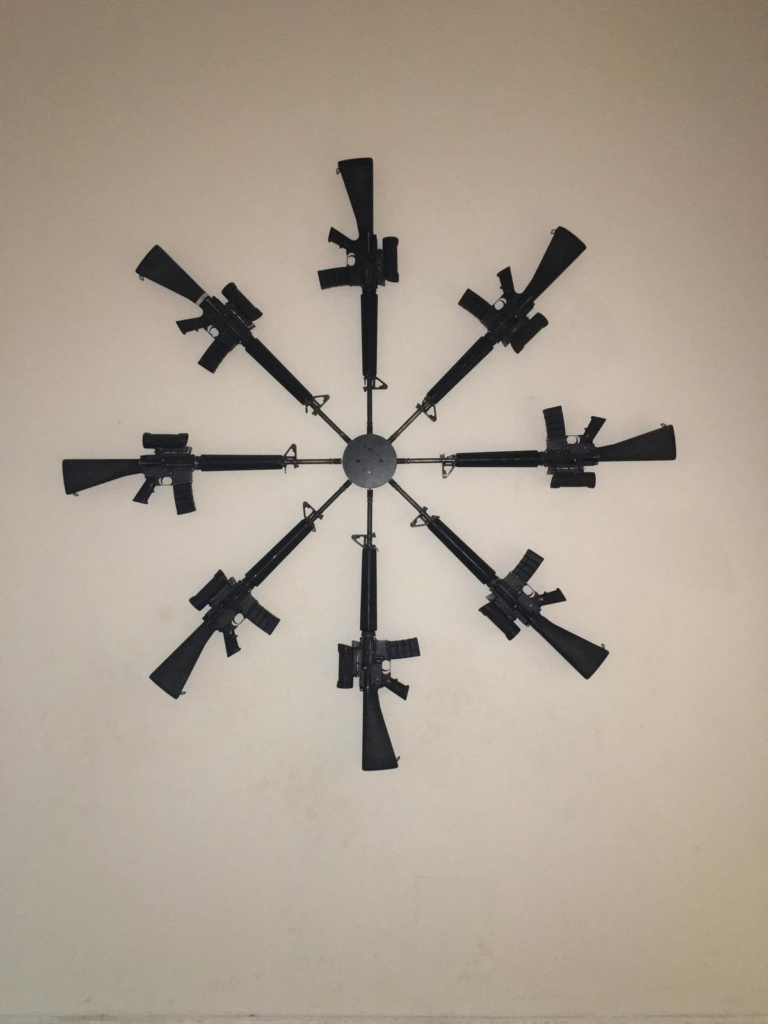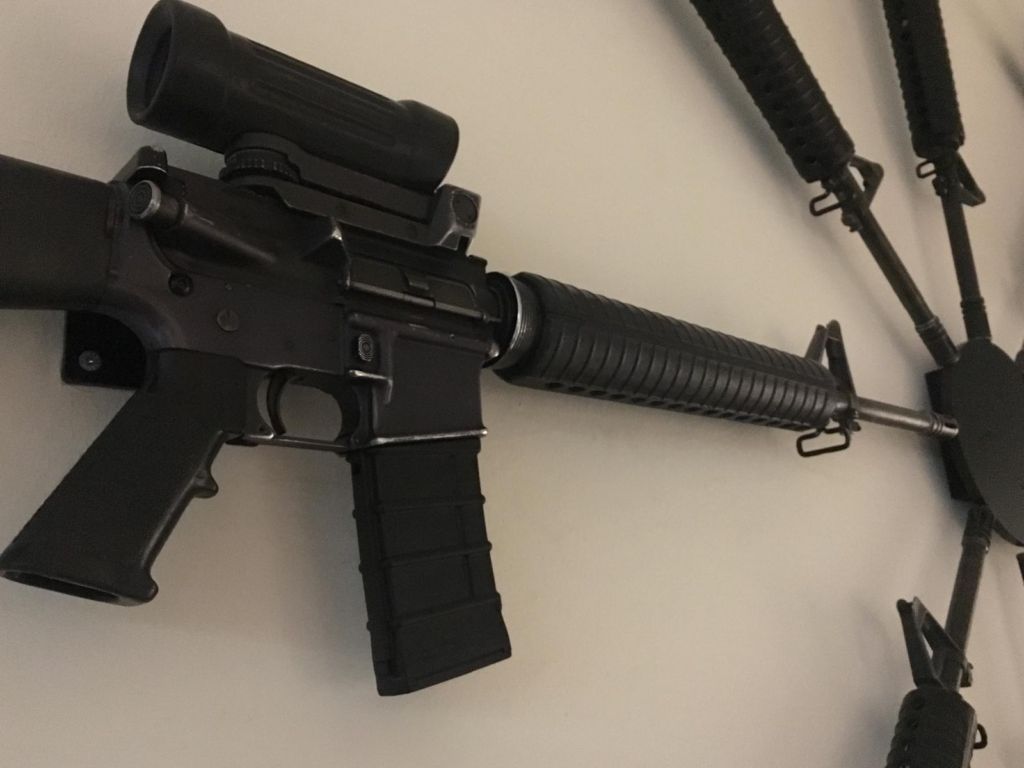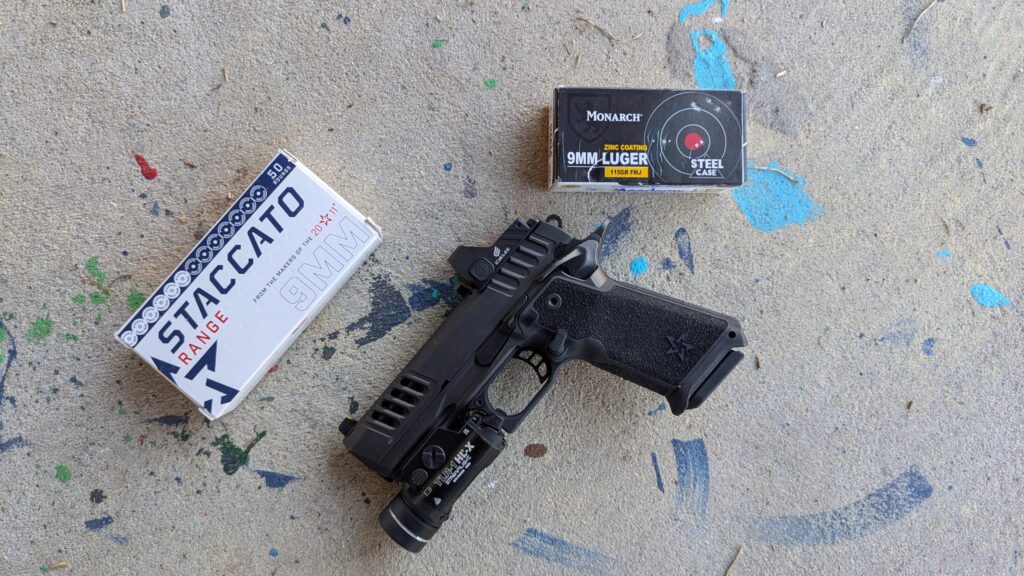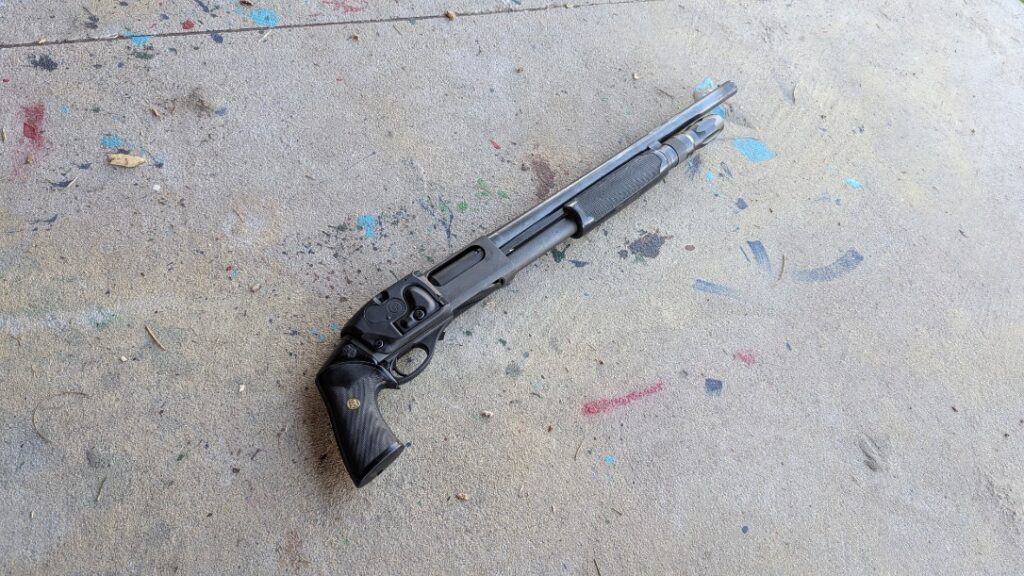Title Image: A photo of Danish Royal Guards I took on my trip to Copenhagen years ago.
“America’s Rifle,” the AR-15, has also been at home in many other countries since it first became an entity during the early 1960s. Internationally, if not made and sold by American defense contractors like Colt Defense or FN, a Canadian company formerly known as “Diemaco” and better known today as “Colt Canada” is probably the supplier—at least in the NATO sphere of influence. Colt Canada has made and delivered weapons to several Western European NATO countries, including Denmark. The Danes first adopted their M-16-derived C7A1s in 1995, replacing their former battle rifle, the HK G3.
The C7 and Danish C7A1

Advertisement — Continue Reading Below

Colt Canada’s most notable rifle and carbine products revolve around the 5.56mm NATO C7 and C8. The C7 is essentially a license-built M-16, while the C8 is the carbine equivalent. The original C7 dates back to the early 1980s and comes from a similar timeline as the original American M-16A2. In fact, the C7 was heavily influenced by the M-16A1E1 prototype, which was a precursor to the M-16A2 in the United States.
The C7 adopted many of the features found on the M-16A2, such as the longer buttstock and updated A2 handguards. Most importantly, it also took the thicker and heavier M-16A2 20-inch barrel profile with the now-standard 1:7 rifling twist made to stabilize the 62-grain M855 / SS109 5.56 NATO standard cartridge.
Advertisement — Continue Reading Below
On the flip side, the C7’s designers retained the original M-16A carry-handle upper receiver, which has a simplified rear-sight assembly compared to the M-16A2 pattern upper receiver. In the same vein, the C7 keeps the M-16A1’s selector/safety scheme consisting of “Safe, Semi, and Full-Auto,” unlike the “burst” function on the third position of the M-16A2’s selector.
The C7A1 is an updated version of the original fixed-carry handle C7 and is the specific focus of this article since it’s the rifle the Danish military fielded in the mid-1990s. The Danes dubbed it the Gevær M/95. The most important difference between the C7 and C7A1 is the latter’s unique flat-top upper receiver with its own rail derived from the popular Weaver-rail pattern.
The C7A1’s upper receiver rail predates the now-standard Picatinny M-1913 rail, and colloquially, this older rail is also known as the “Colt Canada rail” or “Diemaco rail.”
Advertisement — Continue Reading Below
Gevær M/10 Replaces the Gevær M/95 / C7A1s
Readers might be interested to learn that beginning in 2010, the full-size Gevær M/95 / C7A1s were replaced by the Gevær M/10 (Colt Canada C8 IUR carbine). The majority of the remaining stock is now under the purview of the Royal Danish Life Guards (Livgarden) and the Danish Home Guard (HJV).
The Danish Livgarden
The Danish Royal Life Guards (Den Kongelige Livgarde) is a military unit that dates back centuries, founded in the year 1658. One of the specialized units within the Danish Livgarde is the Vagtkompagniet—or the Danish Royal Guard company. This unit is specifically tasked with permanently keeping the peace over some of Copenhagen’s most important royal and national heritage sites, including the Amalienborg Palace, Kastellet (the old 5-sided citadel on the harbor), Rosenborg Castle/garrison of the Livgarde (also in Copenhagen), and the garrison of Høvelte.
The Royal Guard will also provide watch over other Danish palaces outside of Copenhagen as needed. The Royal Guard are the Danish equivalent of the bearskin headwear and red-clad sentries that stand guard outside Buckingham Palace or St. James in the UK in that both guard royal palaces.
Advertisement — Continue Reading Below
Unlike their British counterparts, the Royal Guard is made up of mostly conscript soldiers. The Danish Royal Guard do wear a ceremonial uniform, typically consisting of a dark blue tunic with lighter blue pants and a bearskin hat of their own style. On special occasions the Danish Guard also wears a bright-red tunic. Equally ceremonial are the Colt Canada C7A1s they carry.
The C7A1 And The Danish Royal Guard

The C7A1 rifles carried on duty while keeping the peace at the various royal houses and palaces differ from a standard Danish military C7A1 as the rifles on guard duty include detachable carry handles specifically designed to fit the Colt Canada pattern railed upper receivers. With their carry handles, Guard rifles differ from the rest of the Danish C7A1s which typically include a distinctive standardized ELCAN C79 optic instead.
Advertisement — Continue Reading Below
Royal Guard rifles also have bright white ceremonial slings installed for decorative purposes. Sometimes, the rifles may be seen with attached American-designed M7 bayonets. But one of the most distinctive features of the Royal Guard’s rifle is the specially-made ceremonial 9-round rifle magazine. These give the weapons a flush and trim look and are loaded with 5.56mm NATO cartridges.
Following security concerns during terror attacks in Copenhagen in 2015, Royal Guards also carry fully-loaded 30-round STANAG magazines on their person. But they’re concealed so as to not disrupt their ceremonial uniforms and style.
The Takeaway
Dear reader, if you follow my work, you might consider that this piece is slightly different from most of what I write here. And it’s true, but I’ve had the chance to spectate the Danish Royal Guard on duty while visiting Amalienborg Palace in Copenhagen some years back.
Advertisement — Continue Reading Below
Without getting too off-topic here, Europe is fascinating simply due to how full of history its streets and capitals are. Seeing the Danish Royal Guard in person is simply a different experience for me. The guards’ Colt Canada C7A1 / Geværs M/95 made an impression on me because I’d have expected that they carry something more archaic, like a Krag-Jørgensen bolt-action rifle and not a relatively modern M-16 derivative.
After all, regardless of furniture or configurations, the AR-15 is a fact of daily life for many of us shooters here in the United States. Because it’s commonplace, it’s easy to take for granted as an “everyday firearm” that isn’t anything special or exotic. That’s why seeing them protecting palaces and royalty just hits a little differently.
Besides the old-meets-new aspect of this old military corps from Denmark guarding their monarchy with the essential modern rifle, it was also alluring to view the mundane turn regal in a faraway land.
Advertisement — Continue Reading Below















